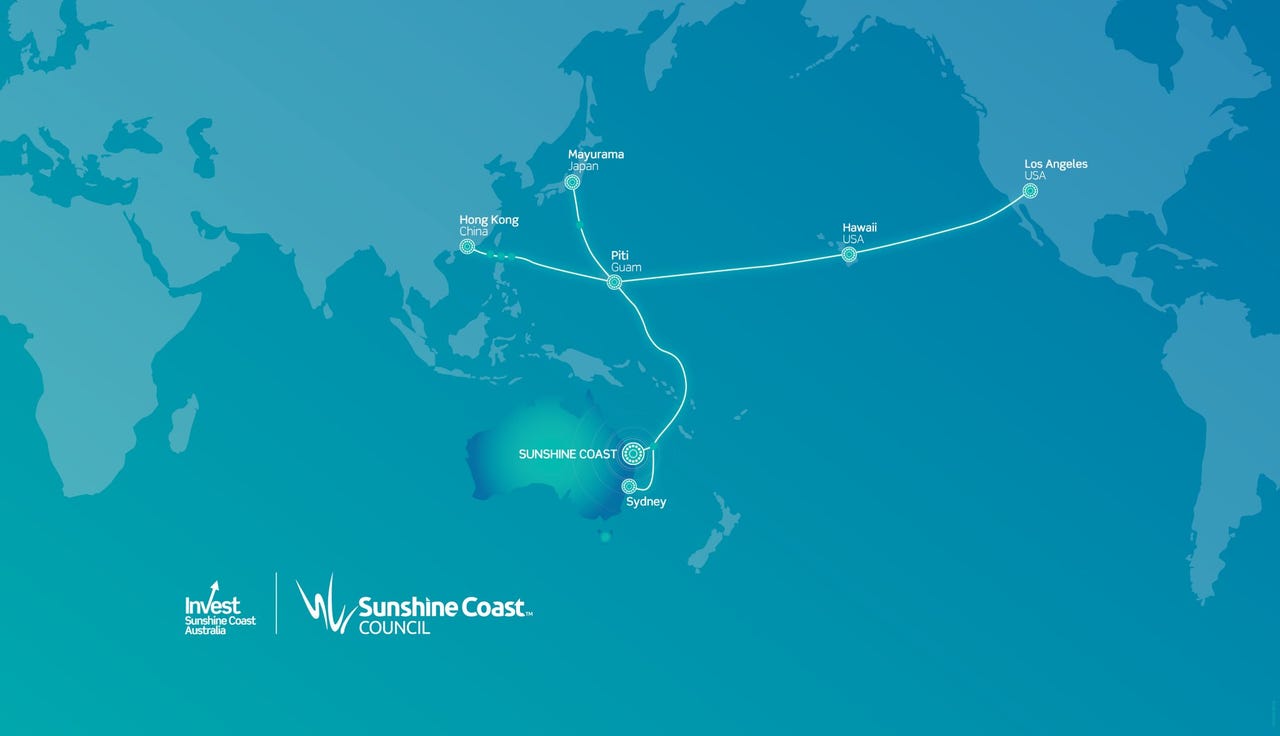Vertiv chosen to build Sunshine Coast subsea cable landing station


Australia's Sunshine Coast Council has announced that Vertiv will be building the AU$6.6 million cable landing station for the Sunshine Coast International Broadband Submarine Cable, which will connect to the Japan-Guam-Australia South (JGA-S) submarine cable.
Vertiv won the tender to design and build the cable landing station in Maroochydore after saying it would use local contractors for the project, the council said.
The council has set aside AU$35 million in total to build out the 550km Sunshine Coast International Broadband Submarine Cable, including AU$15 million in funding from the Queensland government's Jobs and Regional Growth Fund.
According to Sunshine Coast Mayor Mark Jamieson, the cable will provide the fastest broadband connection between Australia and Asia.
"Our Sunshine Coast is fast becoming a digital leader and the submarine cable network will help to position our region as a key digital trading location from Australia," Jamieson said on Friday.
"Today's commitment with Vertiv helps us to ensure the delivery of the international submarine cable connection is on track to be operational in 2020."
The cable landing station, which will be built to house four submarine cables, is also "designed to reflect the vision for the Maroochydore city centre", Jamieson said, instead of the "anonymous nondescript" design usually used for such structures.
Announced in September, the Sunshine Coast cable is being built in partnership with RTI Connectivity (RTI-C), with the 9,600km JGA-S cable connecting to the SEA-US cable system between the United States, South-East Asia, and the HK-G system between Guam and Hong Kong.
According to the local council, its submarine cable project should provide 864 new jobs in the area, as well as stimulating AU$927 million in investment in Queensland.
Vertiv Australia and New Zealand MD Robert Linsdell added that the cable will enable more Internet of Things (IoT) and smart cities applications for the region.
"Once again, our council is at the forefront of thinking outside the square, securing new revenue sources and pursuing opportunities to generate economic and employment growth as a major dividend for our residents, thus ensuring we continue to be Australia's healthy, smart, creative region," Jamieson said back in September.
"To have all Australian east-coast international cables landing in Sydney is not only more expensive, it's a huge business and national security risk if those cables are damaged at the same time."
RTI-C, which is the sole developer of the northern portion of the JGA cable and in partnership with Google and AARNet for the southern part, said the Queensland connection would be faster than the one in Sydney.
"This new path will deliver traffic into and out of Australia faster than the Sydney route because it is geographically closer to mainland China and Hong Kong, where there are over 1.1 billion people," RTI-C CEO Russ Matulich said.
The JGA was announced by Google in April, with two fibre pairs to connect Minami-Boso, Japan, to Piti, Guam, and two fibre pairs to connect Piti to Sydney. The cable has a design capacity of more than 36Tbps.
It is being built by NEC and Alcatel Submarine Networks, and is due to be complete by the first half of 2020.
Subsea cables across the globe
- Vocus' Australia-Singapore Cable (ASC)
- Vocus' North West Cable System (NWCS) between Darwin and Port Hedland, and the new Tiwi Islands spur being added
- The Australian government's Coral Sea subsea cable, being constructed by Vocus to connect Australia, Papua New Guinea, and Solomon Islands and funded through the foreign aid budget
- Google's Dunant transatlantic subsea cable between Virginia Beach in the United States to the French Atlantic coast
- The Indigo subsea cable system being built by Telstra, SubPartners, Google, Singtel, AARNet, Indosat Ooredoo, and Alcatel Submarine Networks, connecting Sydney, Perth, Singapore, and Jakarta
- The Indian government's Chennai-Andaman and Nicobar islands subsea cable, being built by NEC
- Southern Cross Cables' NEXT subsea cable system between Australia, New Zealand, and the United States, being built by SubPartners
- The Trident subsea cable system connecting Perth with Singapore via Indonesia
- The Jupiter subsea cable connecting the US, Japan, and the Philippines and being built by a consortium including Facebook, Amazon, SoftBank, NTT Com, PLDT, and PCCW
- The Hawaiki subsea cable between Australia, New Zealand, and the US
- Superloop's Hong Kong cable
- Telstra's Hong Kong Americas (HKA) cable between Hong Kong and the US
- The Pacific Light Cable Network (PLCN) between Hong Kong and the US
- Google's Japan-Guam-Australia (JGA) cable system
- The Asia-Pacific Gateway (APG) subsea cable connecting China, Hong Kong, Japan, South Korea, Malaysia, Taiwan, Thailand, Vietnam, and Singapore, owned by a consortium including China Telecom, China Unicom, China Mobile, NTT Communications, KT Corporation, LG Uplus, StarHub, Chunghwa Telecom, CAT, Global Transit Communications, Viettel, and VNPT, and being constructed by NEC
- The Southeast Asia Japan 2 cable (SJC2), which will have 11 landing stations in Singapore, Thailand, Cambodia, Vietnam, Hong Kong, China, South Korea, Taiwan, and Japan, being built by NEC and funded by a consortium including China Mobile International, Chunghwa Telecom, Chuan Wei, Facebook, KDDI, Singtel, SK Broadband, and VNPT
- The Bay to Bay Express Cable System (BtoBE), connecting Singapore and Hong Kong with the US, being funded by consortium including Facebook, Amazon Web Services (AWS), and China Mobile International, and being built by NEC
- The South Atlantic Cable System (SACS) connecting Angola and Brazil, going live in October 2018 after being built by NEC
- The PNG subsea cable network being built by Huawei